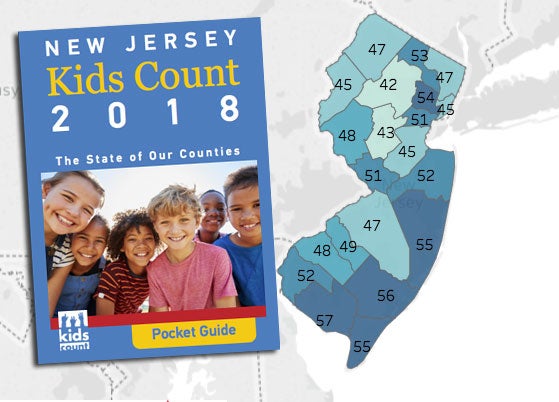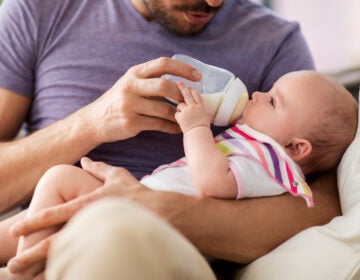New Jersey kids better off than most in U.S., but poverty rates vary widely by county
About 15 percent of kids in the Garden State live in poverty, while the national average is 21 percent.

(Image via Advocates for Children of New Jersey)
Overall, children in New Jersey are better off than other kids around the country. About 15 percent of kids in the Garden State live in poverty, while the national average is 21 percent.
That’s according to the annual Kids Count report released Tuesday that rates each county in the categories of family economics, health, education, and child safety.
But the poverty rate varies widely across New Jersey. For example, in Somerset, the rate is 5 percent, while 28 percent of children live in poverty in Passaic.
The latest report compares baseline data from 2012 to the most recent numbers — in some cases, that data is from 2016; in others, from last year.
For the most part, rich counties got richer and poorer ones got poorer, with the median household income of families with children spanning from $152,829 in Hunterdon (up 15 percent from 2012) to $42,282 in Cumberland (down by about the same amount in the same time).
New Jersey is an expensive place to live, regardless of income: Almost half of households spend more than 30 percent of their income on housing — the threshold considered to be affordable. The proportion of households paying more than a third of their income on housing is greatest in the state’s coastal counties.
In general, counties with higher median incomes had better health outcomes among residents; those with more poverty had worse results. But in Ocean County, for instance, median family income falls at about the halfway point among the counties, yet it ranked No. 1 for child health.
That may be due to local leaders pushing hard to enroll kids in New Jersey Family Care, the state’s public insurance program, said Cecilia Zalkind, president of Advocates for Children of New Jersey, which released the report.
Enrollment in New Jersey Family Care increased all over the state, not just in Ocean County. But there was a statewide decrease in families accessing other public benefits. Fewer families are receiving Temporary Assistance for Needy Families — known as TANF — or help from the Supplemental Nutrition Assistance Program, formerly called food stamps. But Zalkind said that’s not a reflection of decreasing need.
“We have a poverty rate that has stayed the same — the need is there,” said Zalkind. “I think it is families who are worried about applying for benefits.”
Her office has heard from families wary of applying for TANF since changes in 2016 made requirements for eligibility more complicated and limited the amount of time a family could receive the benefits.
“They worry that, at some point in the future, they will need it more,” she said.
This year’s survey was the first that measured state test scores by county. Statewide, just half of students met or exceeded the expectations for third-grade reading and math levels.
Despite a state budget increase to expand preschool, enrollment in publicly funded preschool and kindergarten dropped, and the number of licensed child care facilities also went down.
“New Jersey has one of the strongest preschool programs in the country,” Zalkind said. “I think we need to do a better job of making sure that eligible children are actually enrolled.”
Statewide, juvenile arrests dropped significantly between 2012 and 2016. Zalkind attributed that to an alternatives to incarceration program, adopted in 2004, that is now having an effect.
While Advocates for Children of New Jersey focuses on producing the data and leaves the counties to analyze underlying causes, Zalkind said her group plans to attend statewide community forums to discuss the report, what drives the trends, and what can be done to address the findings on a county-by-county basis.
WHYY is your source for fact-based, in-depth journalism and information. As a nonprofit organization, we rely on financial support from readers like you. Please give today.





